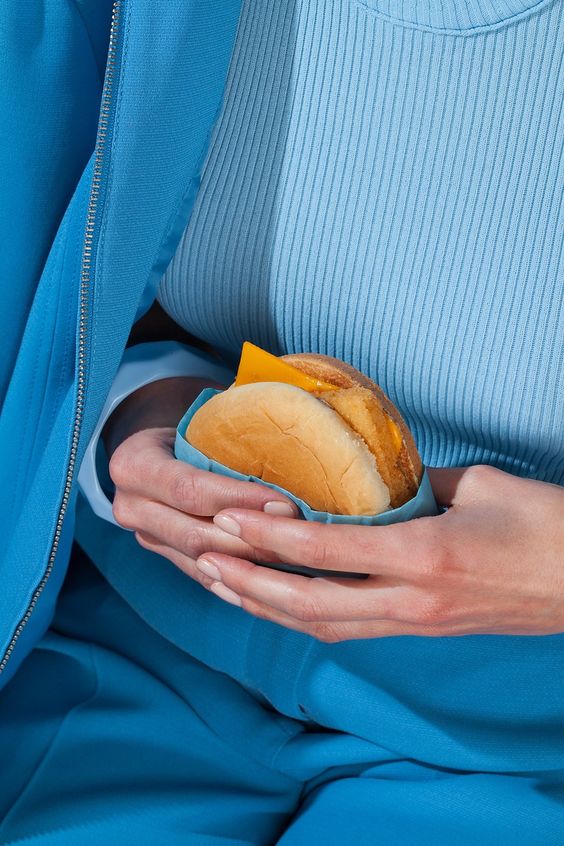The words fashion and sustainability do not exactly go hand in hand. Fast fashion accounts for ten percent of the world’s carbon emissions and is the second largest consumer of the world’s water supply.
The harsh reality is that any form of consumerism can have negative impacts for the environment, with up to 80% of unwanted textile items ending up in landfills (source). So how can fashion brands do their part to help reduce the impact of their practice so we can all feel better about the clothes we buy and have confidence in where they come from, and where they will go from here. And while we implore business owners to do this work from a desire to not further fuel the climate crises it is also more important than ever to consider sustainable practice from a business standpoint, with 67% of fashion buyers willing to pay more for an eco-friendly product (source). It is becoming integral to successful business that sustainable practice is championed as consumer awareness increases and audiences begin to not only expect but demand that brands do better. The consumer of the future is climate savvy and is looking to fashion retailers to provide them the confidence to put their dollar towards a better future.
Here are our top five tips for a more sustainable fashion brand:
Show us what you’re made of
Consumers today want to know exactly what they are purchasing. By sourcing climate friendly materials you can ensure the sustainability of the product itself. As the number of sustainable material options are growing making it easier than ever to access an array of suitable textiles. Even big brands such as Zara, although still miles away from perfect on the sustainability scale, have taken to utilsing vegan leather made from pineapple leaves. Another powerhouse material is Hemp, producing more fibre per acre than cotton, requires less water to grow and is biodegradable at the end of its life. As the eco friendly material options grow so does the opportunity to be transparent about how your products are made and engage environmentally minded audiences.
Rewire how we approach packaging
Packaging is often the most harmful type of waste as it is single use and often involves unnecessary plastic that is impossible to recycle! When reconsidering the textiles your product is made of it is equally as important to address the packaging it is delivered in. Some sustainable packaging options include Banana Paper, Stone Paper, Mushroom Packaging, Sugar Cane Paper and Promeg. Each of these options are granted the sustainable tick of approval for being biodegradable after use, using less water and emitting less CO2 to be created. Once you have secured the appropriate material to ensure your clothes get where they are going safe and sound, it is always important to consider how minimally you can package it up in order to save resources. Remember to include information on how your customer can best dispose of their packaging waste, bonus points for using a QR code digital format and saving paper!
Championing a circular economy
Overconsumption is one of the biggest sustainability issues that the fashion industry faces. Fashion brands are urged to help consumers hold onto and continue using their products for extended periods of time whether this be by offering repairs to old stock or allowing for old styles to be repurposed. A great new way to assist consumers in doing this is by providing digital garment passports. A digital garment passport is a QR code tag on clothing that enables the product to be tracked through its lifecycle and allows for instructions for resale and recycling (source). This gives brands the opportunity to provide consumers with best practice when it comes to disposing of garments and promote return and recycle programs where old stock can be reused. Digital garment passports can also allow for greater transparency between brands and consumers as some organisations opt to include material, production and transportation information. Offering customers a repair and recycle program when shopping with your brand can help them increase the lifespan of their item and allow them to feel good about future purchases.
Carbon Neutral + Carbon Positive
There are increasingly more and more programs available to help businesses offset their carbon emissions. Fashion brand Citizen Wolf has taken this incentive onboard and proudly makes sustainably carbon negative t-shirts. For every tshirt sold Citizen Wolf offset the CO2 emitted through New Leaf Project who are rewilding forest habitats in Tasmania. A Citizen Wolf tshirt also creates 48% CO2 emissions than a regular fashion tshirt and as they only make shirts to order, waste is completely minimised. Some brands are also offering carbon neutral shipping by offsetting these emissions, ensuring that environmental impact is considered at every stage of the product journey.
Could your product be made to order?
A recent trend among smaller retailers is to make products on demand after the product has been purchased. This model is a god send to the sustainable fashion effort as it results in no deadstock waste. An astonishing 2/3 of all clothing made globally every year ends up in landfill within 12 months with 30% of the clothing made by fashion retailers never expected to sell in the first place. The fast fashion industry cashes in on trend cycles that can come and go in just a few weeks before they are discarded and move on to the next thing. Made to order items can cut out this large proportion of waste that occurs before the product even leaves the retailer.
Put your money where your mouth is
It can feel like almost every brand has some sort of sustainability promise, but how many of these are truly impactful is hard to decipher. Greenwashing is a term coined to describe when an organisation makes a claim to be environmentally conscious for marketing purposes but does little to actually deliver on these claims. One way to avoid greenwashing is by getting organisations on board to help keep you accountable. 1% For The Planet is a certification granted to businesses that donate at least 1% of overall profits to environmental causes. This is a great way to keep your business accountable, give back to a cause of your choosing and gain a reputable certification for your efforts. A similar organisation is One Tree Planted, where businesses can plant one tree for each product or service sold for one dollar. Utilising organisations such as these allow you to champion your sustainability efforts in a credible and effective way.
Sustainability should no longer be an afterthought but rather the benchmark that all brand decisions are built from, and consumer expectations are reflective of this.
To create a solid following with unshakeable loyalty, brands need to leverage every opportunity they can to showcase their engagement with the big problems that matter to consumers most, and the climate crisis is a big part of that. The sustainable fashion market is predicted to reach $9.81 billion by 2025 and $15.17 billion in 2030 as consumers look to put their dollar where their conscience is (source). Any of the above is a great place to start but should not be undertaken in solidarity but rather as a step towards an overarching conscious fueled foundation.







